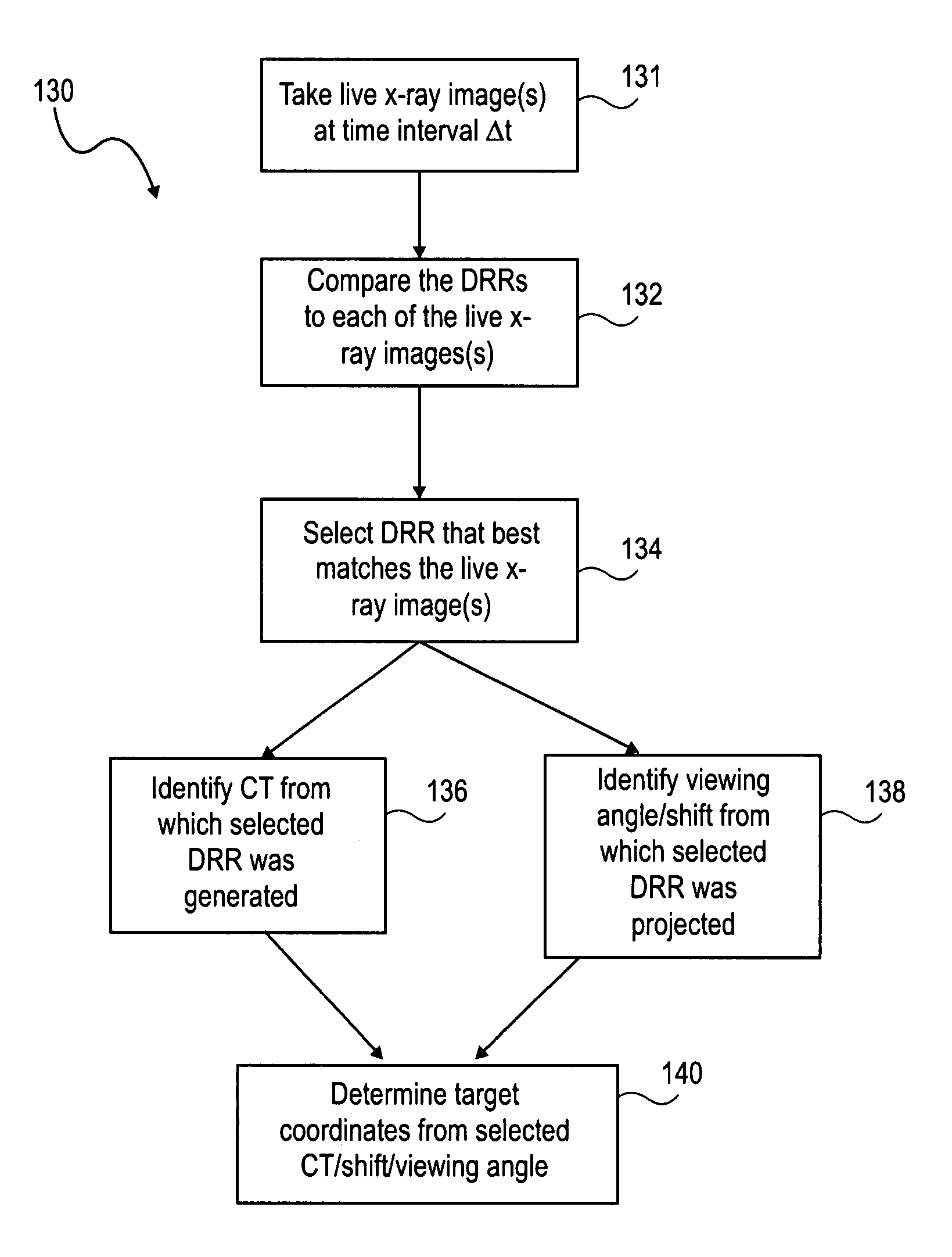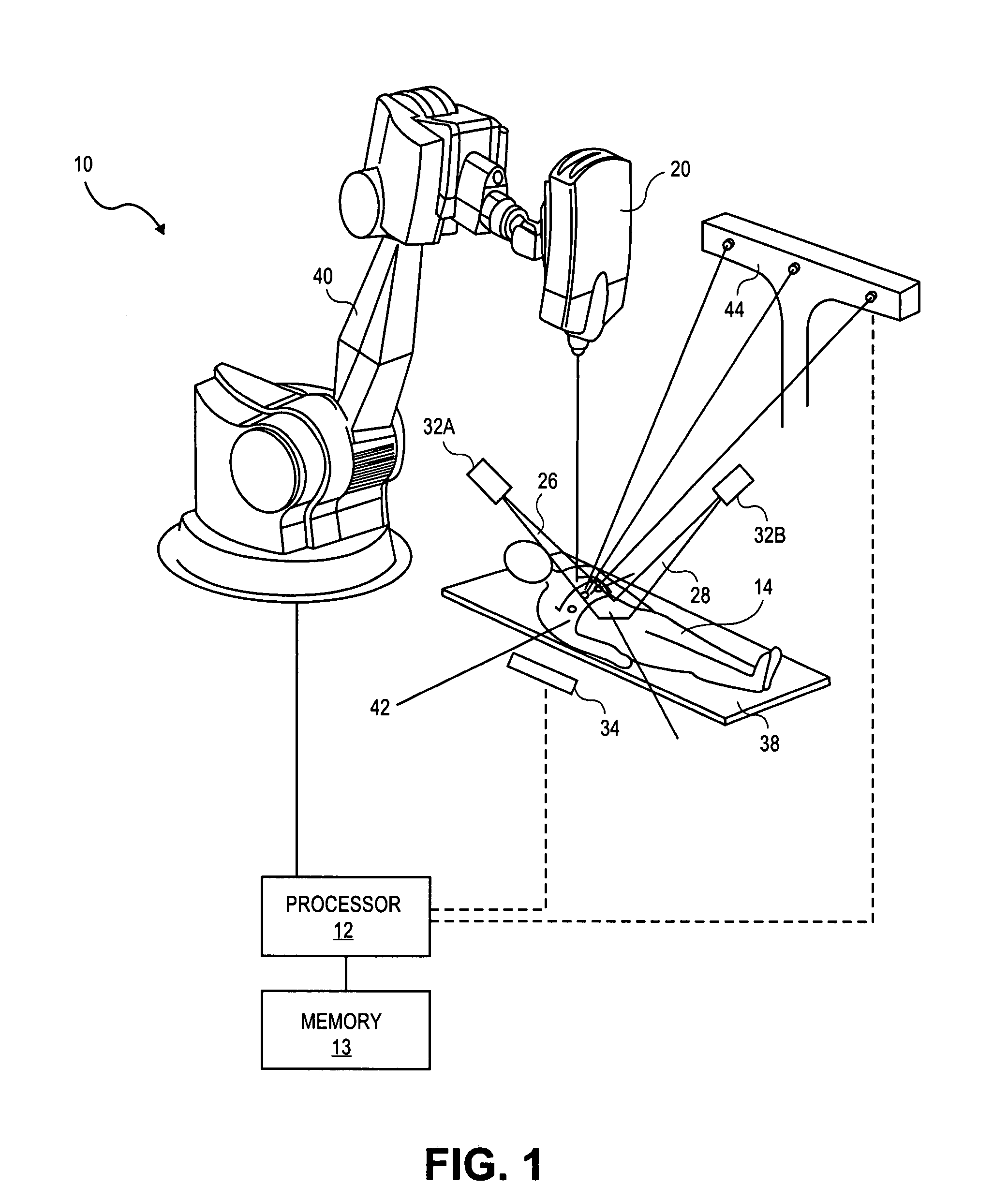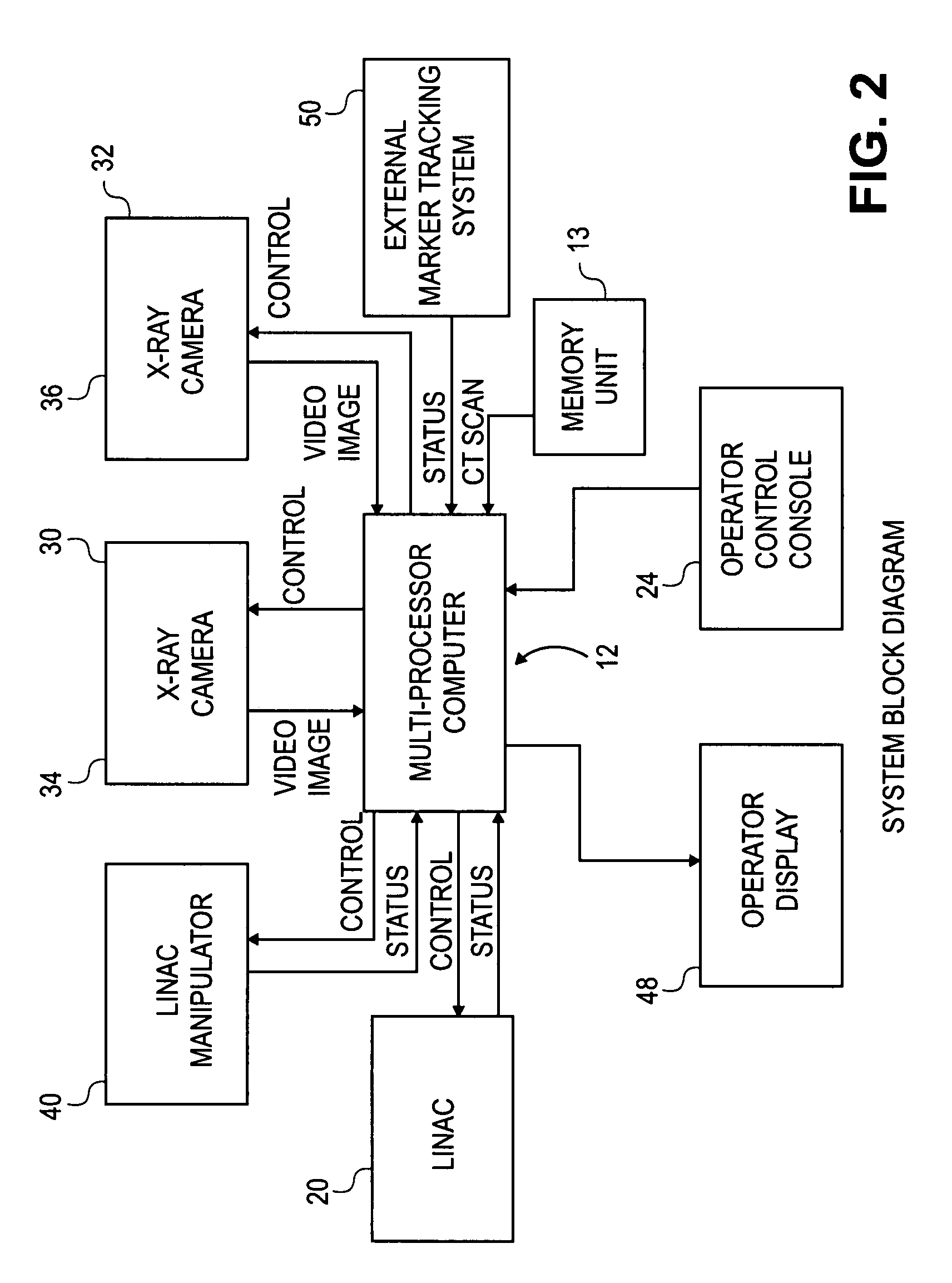Method and apparatus for tracking an internal target region without an implanted fiducial
a target region and internal technology, applied in the field of tracking the location can solve the problems that the target region in the abdomen or the chest cannot be treated with this method alone, the x-ray camera system cannot be used to determine the position of the target region, and the difficulty of aiming
- Summary
- Abstract
- Description
- Claims
- Application Information
AI Technical Summary
Benefits of technology
Problems solved by technology
Method used
Image
Examples
Embodiment Construction
[0021]The invention is particularly applicable to an apparatus and method for directing a radiation beam towards an internal target region without implanting an internal fiducial in or near the target region to determine its location, and it is in this context that the invention will be described. It will be appreciated, however, that the apparatus and method in accordance with the invention has greater utility, such as to other types of medical procedures with other types of medical instruments, such as positioning biopsy needles, ablative, ultrasound or other focused energy treatments, or positioning a laser beam for laser beam treatment. Prior to describing the invention, a typical radiosurgery device will be described to provide a better understanding of the invention.
[0022]As used herein, a “target region” is the region to which a treatment (e.g., radiation) is to be directed. A target region is located in a “relevant volume,” which refers to an internal region surrounding the ...
PUM
 Login to View More
Login to View More Abstract
Description
Claims
Application Information
 Login to View More
Login to View More - R&D
- Intellectual Property
- Life Sciences
- Materials
- Tech Scout
- Unparalleled Data Quality
- Higher Quality Content
- 60% Fewer Hallucinations
Browse by: Latest US Patents, China's latest patents, Technical Efficacy Thesaurus, Application Domain, Technology Topic, Popular Technical Reports.
© 2025 PatSnap. All rights reserved.Legal|Privacy policy|Modern Slavery Act Transparency Statement|Sitemap|About US| Contact US: help@patsnap.com



